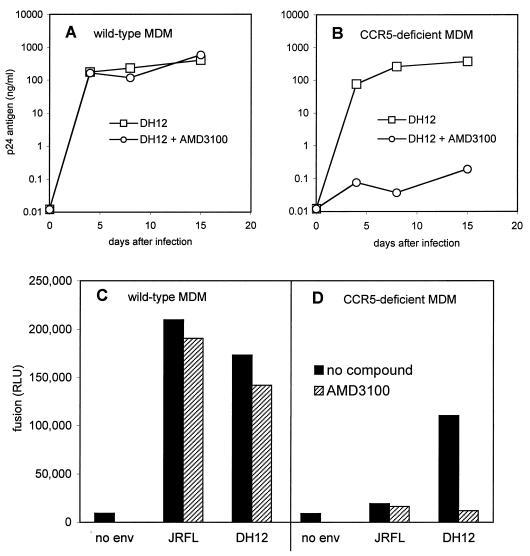FIG. 3.
Macrophage infection and cell-cell fusion with the dual-tropic isolate DH12. Wild-type (A) or CCR5-deficient MDM (B) were infected with the clade B isolate DH12, which uses both CCR5 and CXCR4 in heterologous systems. Infections were done in the presence or absence of the CXCR4 inhibitor AMD3100 (1 μg/ml) as described in the legend to Fig. 1, and supernatant was sampled periodically for p24 antigen. Data are means of duplicate wells and are representative of three independent experiments. To address cell-cell fusion, 293T effector cells were infected with recombinant vaccinia viruses expressing the Env glycoprotein of DH12 or the M-tropic prototype JRFL or with control vaccinia virus and then cotransfected with a T7-driven luciferase reporter gene. These cells were mixed with CCR5 wild-type (C) or Δ32 homozygous (D) MDM that had been infected with recombinant vaccinia virus vTF7.3, which expresses the T7 polymerase. Luciferase expression (RLU) was measured in cell lysates 6 h later as an indication of cell-cell fusion and T7-driven reporter gene expression. Data are means of duplicate wells and are representative of three independent experiments.

